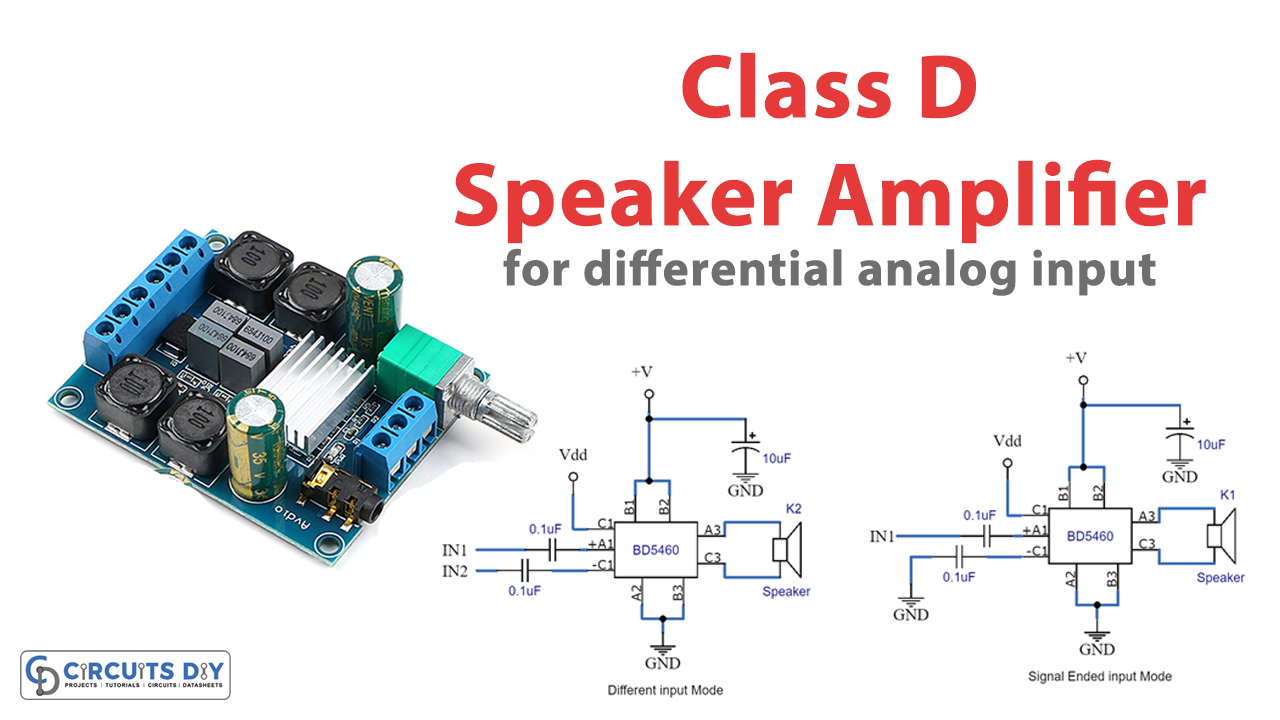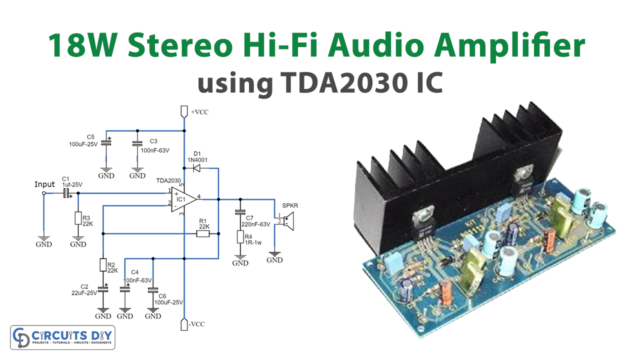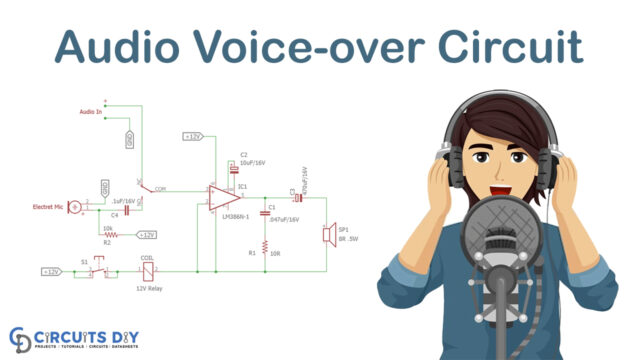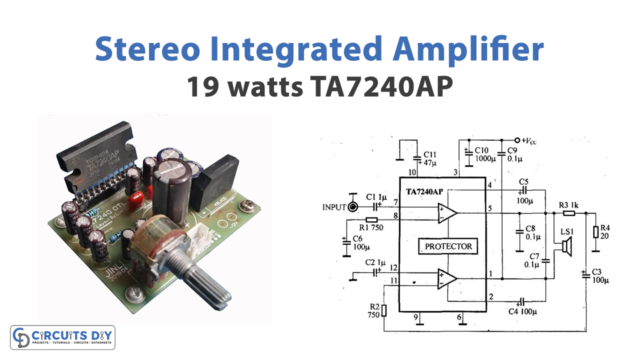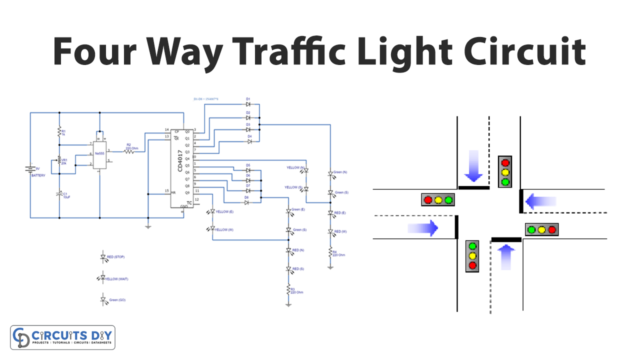Introduction
Are you tired of your audio devices producing lackluster and distorted sounds? Well, say goodbye to mediocre sound quality and hello to crystal-clear music with a Class-D Speaker Amplifier for Differential Analog Input!
A Class D amplifier is an advanced technology in the world of amplifiers that uses power devices controlled like switches, ensuring minimal heat dissipation and high efficiency. The IC BD5460 is a highly efficient Class D amplifier IC that produces an output power of 2 watts at 3.7V, making it perfect for use in mini handheld audio devices.
In this blog, we will delve into the fascinating world of Class D amplifiers and learn how they produce high-quality audio. We will also take a closer look at the IC BD5460. So, get ready to elevate your audio experience to new heights with a Class-D Speaker Amplifier for Differential Analog Input!
Hardware Required
You will require the following hardware for the Class-D Speaker Amplifier.
| S.no | Components | Value | QTY |
|---|---|---|---|
| 1 | IC | BD5460 | 2 |
| 2 | Polar capacitor | 10uF | 2 |
| 3 | Non Polar Capacitor | 0.1uF | 4 |
| 4 | Speaker | – | 2 |
IC BD5460
The IC BD5460 is an example of a Class D amplifier IC that does not require an external choke LC filter. This makes it suitable for mini handheld audio devices such as cellphones, iPods, iPads, and FM radios. It has an output power of 2 watts at 3.7V and an input power range of 2.5 V to 6.5 V DC. Additionally, the IC has built-in benefits such as a standby function, short circuit protection, thermal shutdown, and an under-voltage lockout function.
Working Principle
A Class D amplifier circuit consists of an opamp-based comparator whose inputs are the audio signal to be amplified and a sample high-frequency triangle wave signal. The opamp compares these two signals and generates an output proportional to the original music signal but in PWM form. Power MOSFETs or BJT stages then amplify the PWM to produce clear audio without causing much heat.
Circuit Designs
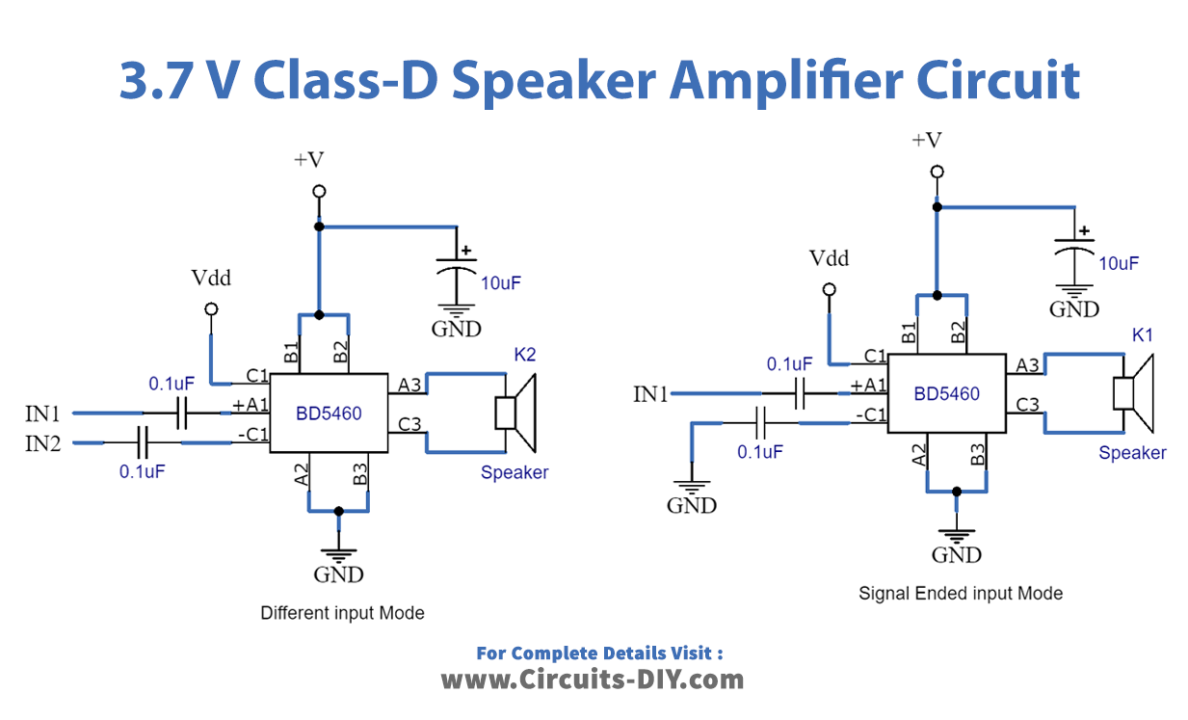
The left-hand side design is a differential input-based amplifier, while the right-hand side represents a single-ended topology. All the 0.1uF capacitors serve as input decoupling filters.
Final Words
In conclusion, the Class-D Amplifier is a game-changer for your audio device. Its unique design and advanced features make it a preferred choice for mini handheld audio devices. The IC BD5460 is a prime example of a Class-D Amplifier IC that delivers crystal clear sound while keeping power usage to a minimum. Try this circuit, and for any query, use the comment section. We would love to hear from you!

